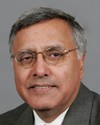Just quickly.
Evidence of meeting #48 for Health in the 40th Parliament, 3rd session. (The original version is on Parliament’s site, as are the minutes.) The winning word was kids.
A recording is available from Parliament.
Evidence of meeting #48 for Health in the 40th Parliament, 3rd session. (The original version is on Parliament’s site, as are the minutes.) The winning word was kids.
A recording is available from Parliament.
Jean-Marc Dupont Acting Executive Director, Centre for Health Promotion, Health Promotion and Chronic Disease Prevention Branch, Public Health Agency of Canada
If we have time.
ParticipAction obviously is key in what we call in health communications “gen pop work”. They are key to help us work with perhaps not an overly segmental, small part of our priority target audiences that we need to work with, but certainly their role, as we all know, is huge. We get a lot of buy-in simply because of who they are and their name and their legacies. So we'll continue to be working with them and the Canadian Society for Exercise Physiology. We've just worked with them on the release of the physical activity guidelines, for example.
You're meeting with ParticipAction, I believe, as well in a couple of days, so you can get into more detail with them, but given that we're short on time, I've got so much I want to say I'll keep--
Conservative

Tilly O'Neill-Gordon Conservative Miramichi, NB
Thank you, Mr. Chair.
Welcome, everyone. Your presentations were really very well worth hearing, and I certainly appreciate all your advice.
Over the years as a grade one teacher, an elementary teacher, I have worked with provincial governments and seen them put many programs into place to focus on proper eating, healthy eating, and ParticipAction with our children. As well, our government in 2003 passed the Physical Activity and Sport Act to encourage Canadians to increase their level of physical activity and healthy eating. As we all know, there's more and more stress being put on these two things as well.
But we've also seen that some of the most important barriers continue to increase, and they have put a kind of a slowdown to physical activity. We've seen that especially in schools, but still and all you usually have your 30 minutes of physical activity. But when you look at teenage older ones, and you look at adults and seniors, there are still a lot of barriers there that are preventing us from carrying on with the healthy eating and the healthy ParticipAction.
I'm just wondering what are some of the chief barriers that you see in any of those age groups, the twenties, the seniors, the adult ages, and how can we try to compensate and help them in this way.
Past President, Canadian Medical Association
I think part of the barrier is that we have forgotten—and several of my colleagues around the table today have made the point—the difference between physical activity and physical education, the difference between active play and active transportation and some kind of thing out there called a gym membership or being on a sports team. We've forgotten the importance of play. We've forgotten the importance of using our feet, using our bodies, our arms and our legs to get us places, to have fun together. If we could get the kids outside playing instead of sitting on their butts in front of a television set, not only would they be more active, but they would also be less prone to the influence of all the advertising out there for all those processed food products.
It's a cumulative effect, but our society has changed in the space of a generation, in my lifetime. When I compare what I and my friends did for after-school activities and what my own children did, and now what the next generation is doing, I'm seeing a trend towards over-protectionism, involvement in organized activity rather than allowing children to play actively, and this concept that unless you've laid down 500 bucks and paid for it, it somehow isn't worth doing.
We have to get back to the very, very basics of playing outside, walking, riding a bicycle, those kinds of activities, taking your kids camping for the summer holidays instead of thinking that the only holiday is a trip to Disney World.
Acting Executive Director, Centre for Health Promotion, Health Promotion and Chronic Disease Prevention Branch, Public Health Agency of Canada
Mr. Chairman, I couldn't agree more.
What has changed, is your question. Information technology, iPads and iPhones, screen time, sedentary behaviour has changed a lot. With respect to the built environment, the municipal planners are great at being able to tell you the radius that is required on a street in a new urban development so that in the winter a snowplough can turn around when clearing the street. But they're not as good and they don't have the training or the background in community development to tell you exactly what is required for a new community to be liveable and to promote healthy behaviour.
I'd like to tweak on what you were saying, but I couldn't agree more. I think what's also changed is our need to, as parents, value more deliberately what we didn't have to before. If we have sidewalks, we're laughing. If the neighbourhood associations and the built environment are lobbying their municipal government to put in sidewalks so the kids don't get hit by a car, victory is claimed, but that's not enough.
The argument, as you know more than anyone, belongs to the one who can frame it in his or her terms. We have in this country learned a lot around how to speak with our trans-sectoral or multi-sectoral partners what is engaging and what is not engaging. In the seventies, we thought surely if people knew smoking was bad for them, they'd all quit, so we put pamphlets in pharmacies and our job was done. In the eighties, as conceptually we'd learned a little more about the incentives and disincentives that are required to help people make decisions, we bandied around terms such as making healthy decisions the easy decisions, and we started to realize there were these barriers that we're talking about now.
What Dr. Bossé said is true. There's a lot of work to do, but it's a really exciting time. I started my career 20 years ago in the public service, left for the private sector, and now am just coming back to the public sector. Everything is cyclical, as we know. There's a huge window of opportunity where the stars are aligning on physical activity, nutrition, obesity, and broader healthy living issues. I think with the leadership and the collective wisdom not just of these NGOs, but the federal, provincial and territorial governments, there is a unique opportunity and it behoves us to grab the reins where perhaps we have not over the last 20 or 30 years. Canada was a world leader.
I think the potential is really there. I could speak to it perhaps by answering some other questions, because I'm getting the signal.
Bloc

Josée Beaudin Bloc Saint-Lambert, QC
Thank you very much, Mr. Chair.
Welcome, and thank you for being here. I only have five minutes and they will go by quickly.
Ms. Doig, in line with what you were saying about ways for the federal government to take the best possible actions to try to improve the situation, what players are in the best position to promote favourable environments? Isn't it—and this is my opinion—the people who are closest to those we want to help and for whom we want to create the environments?
Twenty years ago, I worked at Kino-Québec, which is the equivalent of ParticipACTION, and I hope we have made progress in Quebec since. But weight is still a problem and there are other problems on top of that.
Let’s talk about prevention. You mentioned having fun. There was this advertisement that said: "Come out and play!" Being active can be fun. It’s natural for children to want to move from the time they are really little and it's as if we have taken this opportunity away from them. How do we solve this problem of inertia? How can we make people want to be active? You were talking about the tax credit, a tool that the government could use, but the tax credit only applies to families who pay taxes.
At another committee, we did a study on poverty, and I wonder how to reach the poor. Perhaps we should come up with another formula. These families will not pay $250 or $300 to do an activity. Free public parks and pools, and healthy environments, those are some options. There are municipal family policies that make this easier for our families, our wards—since we operate with wards in Quebec. Do we need a national strategy or should we facilitate the work of people who are closest to those affected and whom we want to help? I will let you answer.
Past President, Canadian Medical Association
I'm not sure if that was directed at me, but it seemed to be.
I think you're right that the actions occur at the individual level, at the grassroots level. But I think the regulatory framework, the authority to cause things to go in the direction they need to go in, has to be at a more overarching level. So there is a role for government, both provincial and territorial governments, but also the federal government, in setting standards, in regulating, in driving some of the framework within which this has to happen.
Yes, there's also the level at the grassroots, and I think part of that is--forgive me--making it sexy again. If we need to somehow encourage people to go back to the kinds of activity I knew as a child, there have to be leaders in the community who take that on as a challenge and those have to be the Gretzkys of this world and other people like him. I picked on him just because his name came into my head.
My community has done some of that stuff. In Saskatoon we do have free pool time in the inner city for our aboriginal people and others of low income. We do have a community that has walking trails and abilities for people to get outside, and that's in a part of the world where it's not uncommon for it to be minus 35. We have a snow angel policy in our city. You are required to shovel your sidewalk so people can actually walk on it.
There are initiatives out there. What we have to do is tell the story and promote that community to community to community, so it happens.
Director General, Association pour la santé publique du Québec
The local, regional, provincial and federal governments must all take action. We must be able to rely on the cooperation and commitment of all parties. I didn’t mention something earlier about pilot projects, and I want to take this opportunity to do so. There are some in each community, but the one I gave as an example goes over a period of three years and one third of its funding comes from the Public Health Agency of Canada. So we see that all governments support our efforts and our various initiatives. So a big thank you to them.
Representative, Board Director for Manitoba, Canadian Association of Occupational Therapists
I couldn't agree more. I think the messaging has to come from all levels. There are the tax credits, the free pools, but we need messaging coming from everywhere to engage the communities, to motivate people to push their communities to develop those free resources, to energize movement on all levels. Active living is more than just the gym membership.
The messaging has to come from the top and it has to come from the bottom and everybody needs to work together to get Canadians active and recognize what active living is and what it means to be active.
Conservative

Patricia Davidson Conservative Sarnia—Lambton, ON
Thanks very much, Mr. Chair.
Thanks very much to each of you for being here. This has been a really good discussion today. We're seeing the discussion go to a level it hasn't been at before. This is where we need to go.
It's very clear that the whole issue is a societal issue. It is not just an issue of being inactive. There are a whole lot of issues.
When we look at the labelling situation, for one thing, I'll be the first to admit it is extremely confusing. We've had this discussion with health officials, and I know there are changes coming. Hopefully the labelling is going to be improved. The physical education aspect in schools is another part of it.
Is anybody teaching people how to cook these days? We talk about prepared foods. Does anybody know how to cook something that isn't a prepared food? Are these part of the federal, provincial, and territorial discussions? If not, they should be, because I don't think there's a lot of expertise out there. What about the public health nurse and the school system, all of those things? We've discussed sodium reductions, transfats, those things, but it takes a whole lot more than that.
We talk about kids not getting enough activity. Dr. Doig, I loved what you said about kids having forgotten how to have fun, to get out and play. I look at my grandson and my great-nephews, who are five years old. It costs $1,000 to join a house league hockey team. Parents can't afford that. Regardless of what kinds of incentives there are from the federal government, it's still way too expensive. We need more accessible activities for kids.
Over-protectionism has created some of this. We're afraid to let our kids out onto the trails that some of the communities have provided. We're afraid to let them walk to and from school. It's totally a societal issue.
Monsieur Dupont, do you want to continue with some of the comments you wanted to make when my colleague was asking her questions? You seemed to be on a bit of a roll there on filling us in on what PHAC might be doing and where we'd be going.
Acting Executive Director, Centre for Health Promotion, Health Promotion and Chronic Disease Prevention Branch, Public Health Agency of Canada
Those who know me know not to get me started.
Acting Executive Director, Centre for Health Promotion, Health Promotion and Chronic Disease Prevention Branch, Public Health Agency of Canada
I'm extremely pleased with the level of discussion, as well. If there is some collective wisdom we've been hearing, and that you will continue to hear, it is in fact the multi-sectoral question. We have learned a lot of lessons over the last 20 or 30 years about how to do that well and how not to do that well.
We require policy, program, and proper communications work. In health communications in the field of health promotion, we have learned so much.
Any consultation I go to, people say “You do not segment enough”. You cannot put a pamphlet out and expect that fridge magnet to speak to new Canadians. You have to segment. You have to do rigorous audience analysis. I won't bore you with the technical details. You need to drill down and get the right message to the right people: first nations, new Canadians, Canadians of low socio-economic status, and seniors, including seniors with disabilities. There are a number of NGOs working with these priority groups as well. We're looking forward to leveraging their wisdom to help us align.
Alignment should be our new mantra. My daughter showed me a YouTube video about cowboys herding cats, and the cowboy says “I've been a cat herder for 20 years”. It's a bit like that. We have a lot of really well-intentioned federal, provincial, and territorial governments, NGOs, and civil society all doing their bit; we're just not aligned properly. That is really hard to do, but we are making headway.
If we continue to work on alignment so that we're all singing from the same hymn book, you will see, all of a sudden, the proper communication messages to the proper stakeholders, to the municipal councillors, the urban planners, and the developers. The message is we've come this far, and I think a new era is starting and it's exciting.
I don't know if that's good enough, but I think I had better stop.
Conservative
Liberal

Ujjal Dosanjh Liberal Vancouver South, BC
Thank you very much for your presentations.
As I was sitting and listening to you, I was reminded of my own battle of the bulge, which is pretty hard to win at my age.
There are a couple of questions I want to ask Dr. Doig. You mentioned the meal program. Have you costed that program for Canada today?